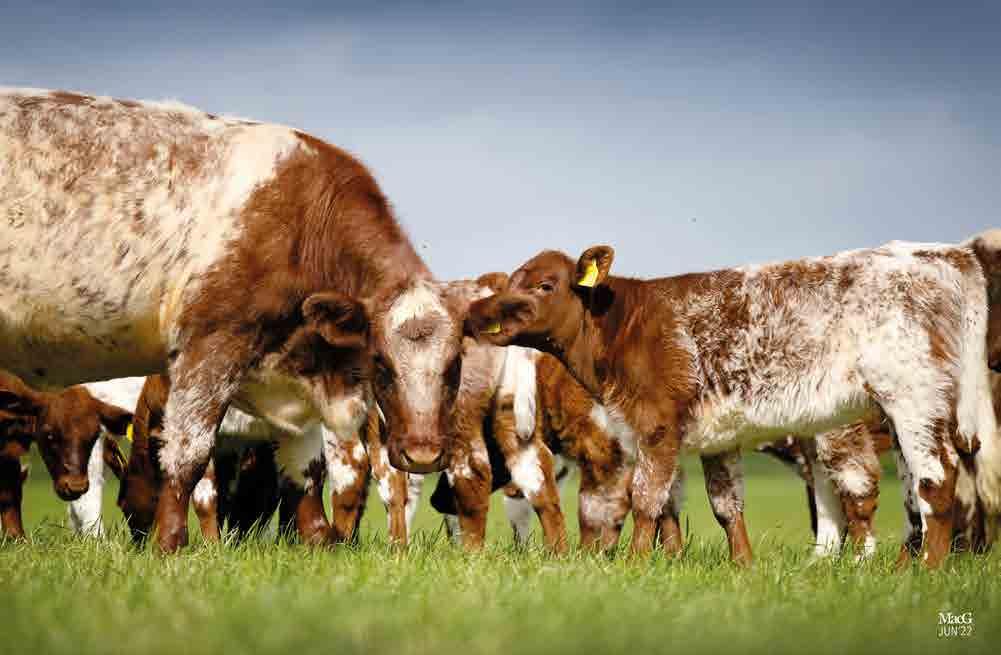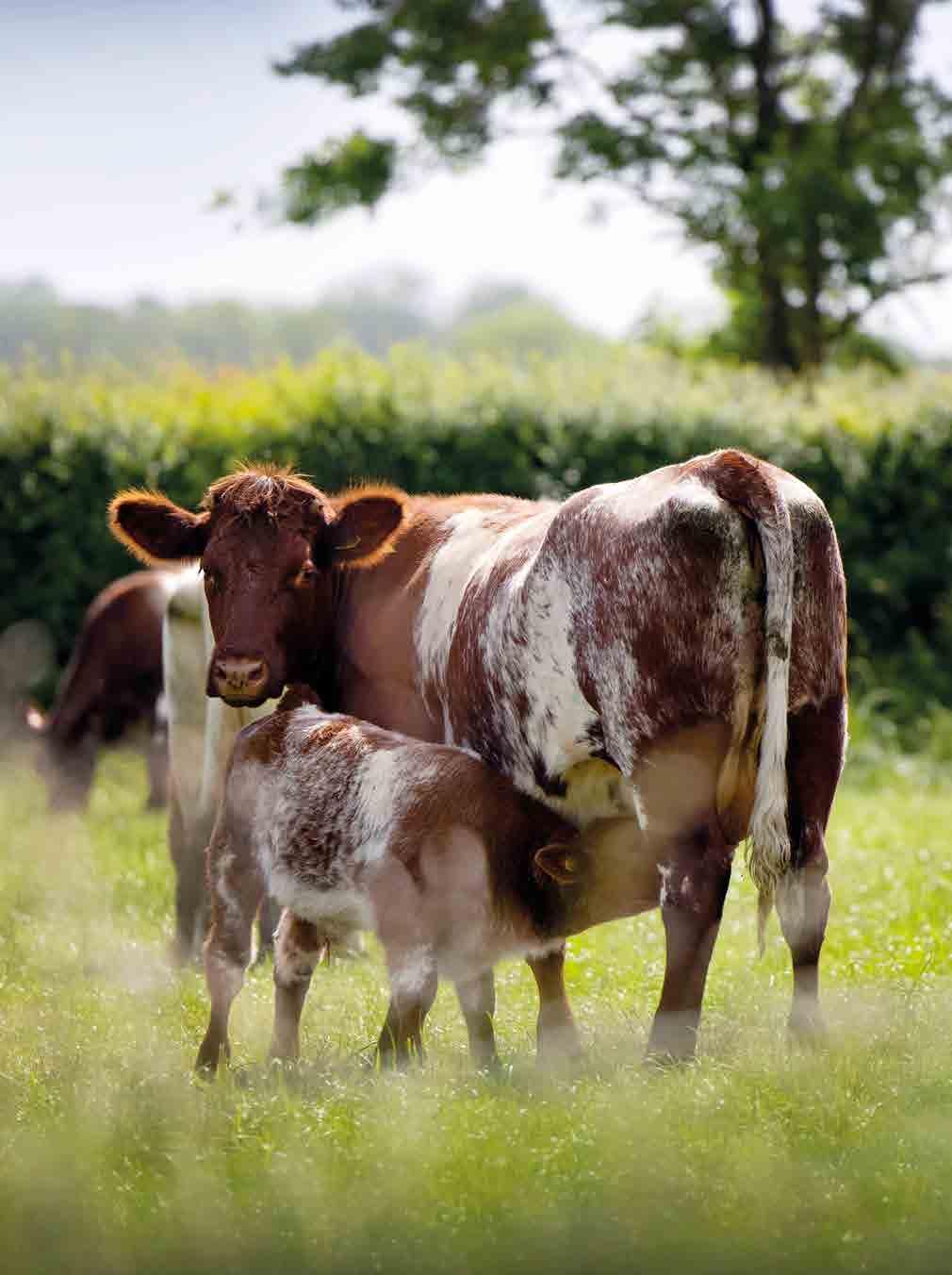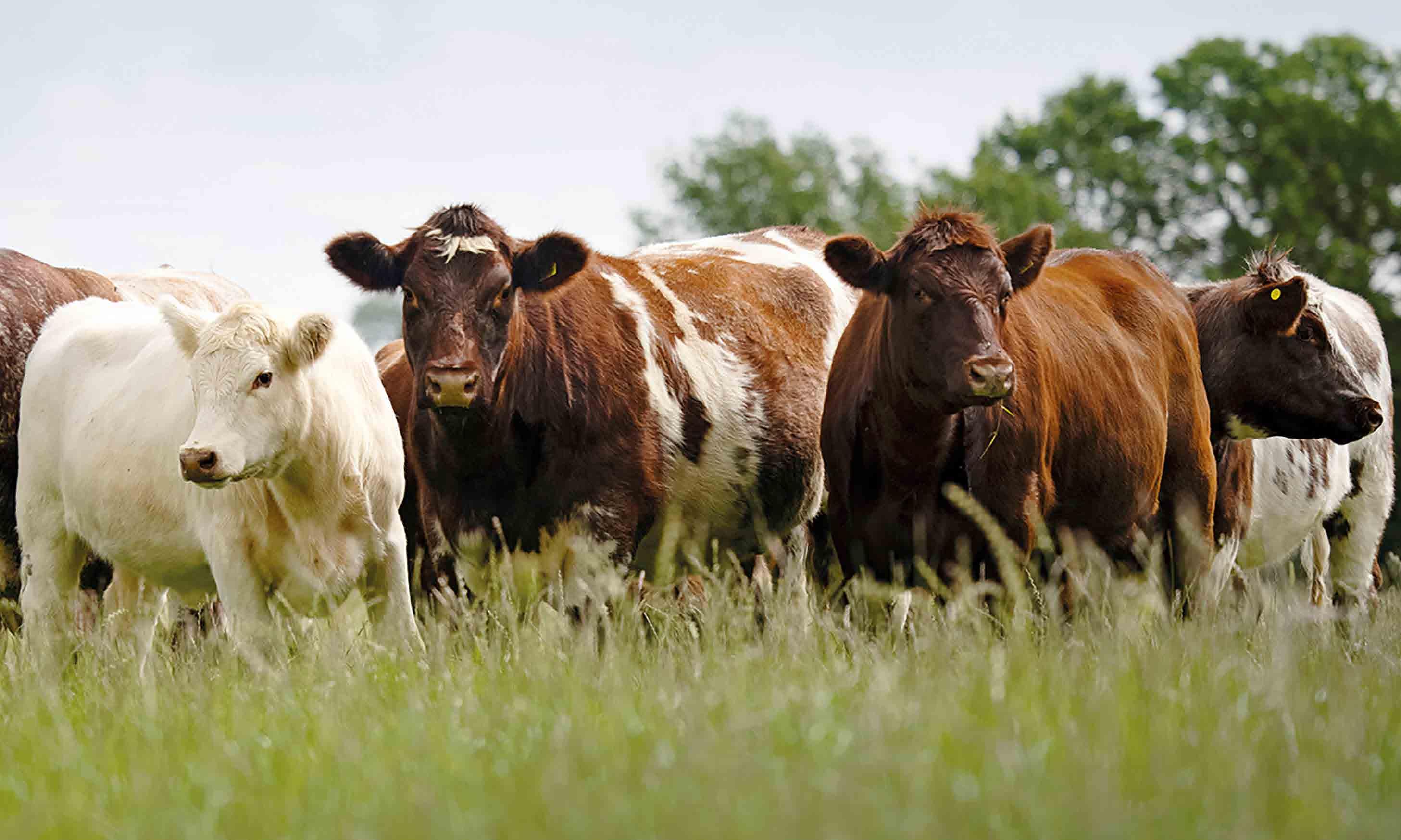
3 minute read
Shorthorns for sustainable farming
Sustainability at the heart of Beef Shorthorn success
“In my opinion they can outperform any other native breed,” says Charles Horton, president of the Beef Shorthorn Cattle Society. “Of course that’s why I stock them, but it’s their versatility that’s remarkable. Quite honestly, I don’t think any other breed can touch them for efficiency and sustainability.”
Advertisement
Charles Horton’s 100 cow pedigree Hannington herd, stocked on his low-lying former-dairy farm near Cirencester, is a good example of the Beef Shorthorn’s productivity and sustainability. A mixed farm across a split site and one of Morrisons’ carbon zero project farms, the arable operation extends to 3,000 acres, managed agroecologically by Charles’ son, agronomist Ed Horton.
Environmental sustainability is a priority across the operation and is achieved on the livestock side of the business through a tight focus on maximising efficiency and productivity. The Beef Shorthorn cattle are fed surplus homegrown cereals, bruised and treated with Harbro Maxammon to increase productivity. Steers are finished for the Morrisons Shorthorn Beef Scheme at 15-16 months and are kept inside to hasten finishing.
That frees up a huge amount of ground, which is allowing Charles to increase the number of breeding females. Heifers calve indoors earlier, at two years, in the spring before being turned out. The use of soya has been completely eradicated on the farm, replaced by a home-grown mix of peas and triticale.
“Bringing down the finishing and the calving age, without using unfriendly feed, has been the best thing we could do to reduce our carbon footprint,” said Charles.
“We moved to this system about three years ago and we’re down to once a year calving in spring. It’s working well for us, but no one way is right or wrong. From a Society point of view, we have lots of members farming extensively on 100% pasture systems and the Beef Shorthorn is a perfect fit for their needs too.”
With core traits that are in strong demand across the industry, it’s that versatility and the ability of the breed to thrive across a range of different farming systems that’s behind a recent rebranding of the Beef Shorthorn as ‘The Sustainable Breed’.
Adopted by the Society to mark the breed’s bicentenary celebrations, the new branding reflects the Beef Shorthorn’s strengths in contributing to sustainable business models, as well as sustainable food production systems. It also acknowledges sustainability through the longevity of the Shorthorn itself - the oldest pedigree cattle breed in the world.
With intrinsic maternal, docile and easy fleshing traits, the breed has become known as ‘the great improver’, due to more than 40 different breeds of cattle incorporating Shorthorn genetics.
The Society’s partnership with Morrisons since 2010 has been a driving force behind that rising popularity, making it Britain’s fastest growing native cattle breed. Demand for Shorthorn Beef for Morrisons ‘The Best’ range continues to outstrip supply and new finishers are being sought on an ongoing basis. With a premium of up to 35p/kg over base for in-spec cattle, it presents an attractive proposition for finishers.
For Charles, the focus on sustainability by the Beef Shorthorn Society is a natural evolution, and a reflection of the breed’s intrinsic traits. He said:
“We can all learn from the past and the story of how the Beef Shorthorn has developed and improved over those 200 years is fascinating, but looking at today’s opportunities is the really exciting thing. “Demand for Beef Shorthorn is strong and with an increasing focus on sustainability across the industry, we expect that demand to absolutely soar in the years ahead.”
“As a breed society, our focus is to work with our members and with our commercial partners to support the sustainability, adaptability, resilience and productivity of our breed over the next 200 years.”


Biodiversity on farm













